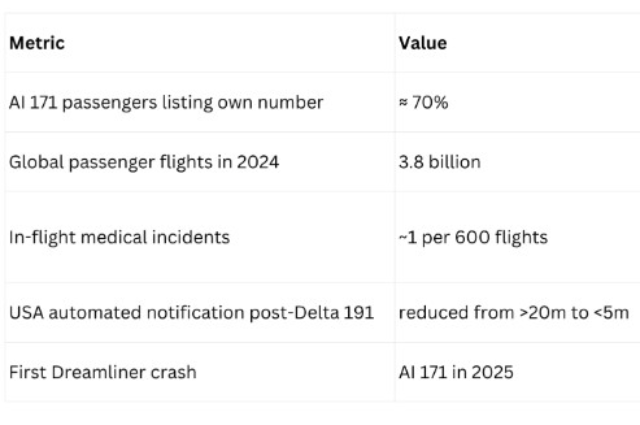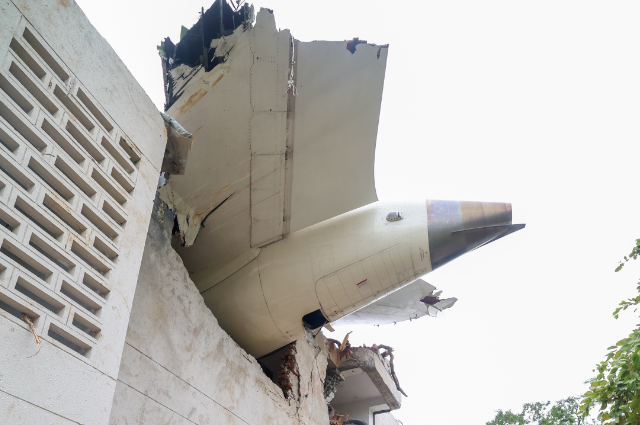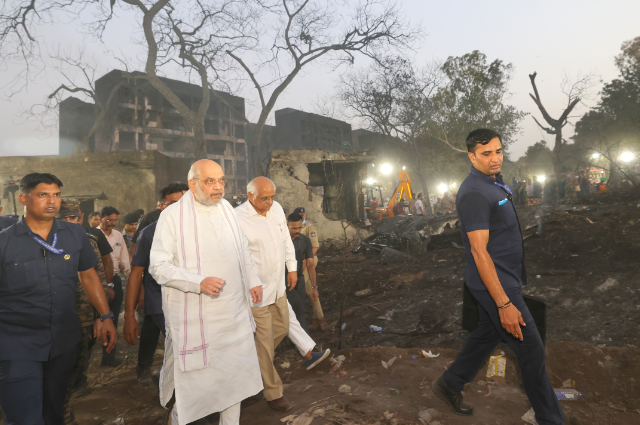“He boarded that flight with a smile. But I never got a goodbye, never got a call. Even grief was delayed by paperwork.” - Anjali Deshmukh, wife of Rohan Deshmukh
“Click, confirm, depart the gate,
No thought of death, no twist of fate.
But life is light, and forms are blind,
And systems leave the lost behind”
What the Ahmedabad Crash Reveals About Our Systems?
On June 12, 2025, Air India Flight AI 171, carrying 242 people, crashed just after takeoff from Ahmedabad, India, resulting in 241 fatalities on board and at least 19 more casualties on the ground, making it the deadliest aviation disaster in India in over a decade. Amid the chaos of fire trucks, ambulances, DNA testing, and tearful reunions, a silent yet systemic failure became painfully obvious: most passengers had listed only their own numbers, not a separate emergency contact. This omission stalled notification processes, created confusion, and extended families’ suffering.
So, dear reader, when you book your next flight, what number comes to mind? Yours? Or the number of someone who would deserve to know if something went terribly wrong?
The Immediate Challenge: “How can I call them if they’re gone?”
Rescue teams, volunteers, and officials arrived within minutes of the crash, but when they tried to reach someone, most phones rang right into the wreckage.
Roughly 70% of passengers had only their own number registered—phones now destroyed or untraceable. Local authorities ended up dispatching officials to knock door-to-door—a heartbreaking, time-intensive substitute for phone notification.
Imagine the scene:
A volunteer trying to console a frantic relative, only to learn the listed number—perhaps even the wife or husband—was missing. How would that make you feel?
Time is precious in a tragedy, not just for logistics but for emotional closure. Every minute spent searching is another stretch of anxiety.
Why Emergency Contacts Matter: It’s Not Just Bureaucratic Box-Ticking
Modern air travel is a testament to safety—3.8 billion passengers flew safely in 2024. But accidents still happen—even if rarely.
- CDC data shows around 1 in 600 flights experience medical emergencies, with fatalities in about 0.3% of those cases.
- The U.S. mandates airlines to collect secondary contact info within 72 hours of departure—not just for crashes, but for health emergencies, missed connections, or lost baggage.
When flights carry hundreds—sometimes thousands—of miles from home, a secondary contact ensures someone knows where you are, regardless of your phone’s fate.
Booking Gaps: Is It Your Fault—or the System’s?
“Most booking platforms were built for convenience, not crisis. We never imagined passengers would input their own numbers twice—but we also never required them not to. This tragedy has shown us how urgent it is to rethink the design of every data field we ask for.” - Kavita Rao, Data & Passenger Services Officer, Civil Aviation Authority of India
Let's pause: is the fault with passengers or the platforms? The answer is: both.
Many airlines or OTAs simply fail to require a secondary contact, and even when present, clearly warn users not to reuse their own numbers.
Psychologically, many passengers repeat their number to receive booking confirmations, thinking, “Why shouldn’t I use my own?” It’s easy—and human.
But those platforms are built by product teams, not rescue coordinators. They haven’t prioritized a field meant for “people you might never think to call—but might desperately want to call during a tragedy”.
So when “Passenger A” lists his own number in both fields, that’s not stupidity—it’s a predictable response to a poorly designed form.
“Been there, done that”: Past Cases with Hard Lessons
a) Ahmedabadi Echoes Still Ring
This isn’t the first time India has seen this error. In 1988, Indian Airlines Flight 113 crashed near Ahmedabad amid low visibility, killing 133. Families waited for hours for rescue news due to poor contact practices, though nothing like today’s technology, the systems were already breaking.
b) Delta Flight 191 (Texas, 1985)
The crash triggered a 14-month trial, but it also led to automated voice notification systems. The result? Emergency services were automatically contacted, slashing response time from over 20 minutes to under 5. Of note—this was a crash on the runway with living survivors. If they couldn’t get timely alerts, how will we fare in worse cases without proper data collection?
c) Saudia Flight 163 (1980)
It’s a harrowing cautionary tale. A fire started mid-flight, but evacuation didn’t take place upon landing, ultimately killing all aboard. While communication wasn’t fatal here, it underscores a universal truth: systems fail when protocols don’t embed human factors.
Regulatory Inconsistencies: A Patchwork, Not a Protocol
Globally, we lack a unified requirement for emergency contacts:
- USA: CDC and FAA guidance—but enforcement is sporadic.
- India: No consistent mandate.
- ICAO/IATA: Publish best practices—but these aren't legally binding.
Ask yourself: why in 2025 does aviation—fraught with regulation—still allow passengers to skip critical communication fields?
What We Can Do: Design, Encourage, Enforce
Here are practical, real-world ways to make a difference:
- Mandatory, Validated Field: Airlines/OTAs should make the secondary contact a required field, validated against credit card or user profile data.
- Inline Warnings & Incentives: Let pop-ups ask: “Are you sure you're using a different number?” Offer a small discount or enhanced seat as a nudge.
- Post-Booking Edits: Many passengers ignore a field once entered. Send SMS reminders: “Confirm your emergency contact here. This helps us reach your loved ones if…”
- Automated Notification Systems: As with Delta 191, send messages instantly to authorities + next-of-kin when distress signals occur.
- Global Standards Enforcement: Encourage ICAO to make “distinct emergency contact” a requirement, not a suggestion.
- Post-Crash Drills: Ahead of commissioning routes, carriers should simulate “crash + no contact info,” measuring delays and emotional tolls.
Where We Stand Today: Stats That Should Worry Us
These numbers spotlight a real weakness—our systems aren’t failing in percentages, but in human impact.

These numbers spotlight a real weakness: Our systems aren’t failing in percentages, but in human impact.
Your Role: Reflect, Act, Advocate
When you next book a flight, set an emergency contact, don’t cheat with your own number. Ask OTAs why emergency contact isn’t always required and voice your views on social media, urging regulators to standardization. Praise airlines that design thoughtful, mandatory fields.
As we have already seen how a small act of entering someone else’s number can make a world of difference in a tragedy.
Let’s Talk!
What do you think? Is insisting on someone else’s number too intrusive? Do pop-up nudges or discounts feel gimmicky—or essential? Would you trade “optional form-filling” for the peace of mind of knowing your family could be notified, whatever happens?
Conclusion: A Sliver of Humanity in the Machine
The Ahmedabad crash is a searing reminder: safety isn’t just about engines or pilots—it’s about how we connect when everything else is broken. That emergency contact field isn’t optional—it’s a lifeline.
We’ve built planes that bridge continents. Now, let’s build systems that bridge our final mile—the phone call.
Let this tragedy rewrite how we treat that overlooked text box—not as a chore, but as a human imperative. Your next flight seat isn’t just a number—it’s a commitment: I’ve thought about who could be told… just in case.


